NAVIGATING THE FUTURE OF AI IN THE WORKPLACE
—
Written by People Transformation & Culture Leader, Helen Matthews
Table of Contents
AI in the workplace continues to be the topic du jour, and as we hurtle through the year, I’ve no doubt that every CPO in every sector is grappling with its implications.
If we take a glance at LinkedIn, we can see that the HR skillset is shifting, and so is the role of the Chief People Officer. From Jacqui Canney at Service Now, whose role has become Chief AI Enablement Officer, to Moderna merging their HR and tech teams, it’s a sure sign of the subtle shift happening across the global c-suites. It also brings into sharp focus those organisations who are demonstrating not just readiness, but foresight and rigour, and those that aren’t quite there yet.
So before we all rip up our job descriptions and enter into brinkmanship with our tech colleagues, I wanted to take a moment to reflect, and consider how we bring it all together, so we don’t end up in one hot mess. *Caveat* if you choose to read on, I possibly have more questions than answers, but with my coaching hat on and in a moment of reflection, I can see lessons learned from my own experiences so far, as well as some opportunities to put people up front and centre in this biggest transformation of work probably since the industrial revolution.
From Policy to Practice: The CPO’s Role in Shaping AI in the Workplace
So, chunking it down into bite size pieces (which is how my brain works best): What’s the opportunity here? With any behavioural change, we know there are tried and tested programmes and methods for driving business transformation. With this change feeling seismic, it makes absolute sense for the CPO/CHRO to be leading or at least be embedded in any task force or other internal leadership group driving AI adoption, integration and workforce transformation.
We need to start with our people. Sounds obvious but from what I’m seeing, there’s a lack of internal engagement. Right now, people are second-guessing what this means for their jobs. And by leaving them in a void of client-first jazz hands and external headlines, without the internal rigour and engagement, we’re leaving behind our most important asset.

#1 / Engage with your people
From internal policy (so everyone’s clear on boundaries and rules of engagement), through to learning and development and co-designing opportunities to use AI to its best possible business advantage, it all needs a considered and planned roll-out and engagement plan.
The old iceberg analogy comes into sharp relief, where those at the top of the structure know far less than those doing the work – so engage with your people to create your competitive advantage, whilst also taking them with you.
#2 / Identify early adopters.
We all know them. From that interesting person chatting at the watercooler who’s been using AI in the workplace for ages, through to the younger demographic tinkering with ChatGPT and image generating AI at home and creating stuff for their side hustles. These are potentially our internal influencers and advocates – ripe for reverse mentoring and co-designing the future state.
#3 / Build a Framework
When we considered education, awareness and competence / confidence in our roll out last year, we created the AI maturity model (borrowed from the DEI growth model) to keep ourselves honest and track where we felt we were. This was used to great effect with both the taskforce and our other stakeholders (such as the strategy board and for employee town halls etc.). I’m sure that other models probably exist but the simplicity and accessibility of this felt right for our business.
We have a joke in my house that every time we create one of these AI memes, it kills a tree
Lance Ulanoff, US editor of TechRadar.
#4 / Cherry-Pick the Right Tools (keeping Ethics & Sustainability in Mind)
According to a HRDirector article written by Jane Firth, “the adoption of advanced HR technologies and analytics has become essential for optimising processes and enabling smarter, data-driven decision making. Boards increasingly expect CHROs to embrace the tools..”
What about the ‘watch outs’? We have to consider sustainability, so working with our ESG colleagues or ERGs when considering responsible usage as part of the policy making right at the beginning is a sensible step. That viral make yourself into a vacuum pack doll trend last month, raised eyebrows in many sustainability circles in terms of environmental impact.
“Professor Gina Neff of Queen Mary University London tells the BBC that ChatGPT is “burning through energy”, and the data centres used to power it consume more electricity in a year than 117 countries.
“We have a joke in my house that every time we create one of these AI memes, it kills a tree,” says Lance Ulanoff, US editor of TechRadar.
“That’s hyperbole, of course, but it’s safe to say that AI content generation is not without costs, and perhaps we should be thinking about it and using it differently.”
So what does responsible use look like and what is your organisation’s stake in the sand in terms of how and when your people should and could use it? Couple that with the fact that AI is generated from work that is often subject to copyright, and it does feel like a more ethically complex take on it all than first may appear.
And hot off the press of course, is the news that most HR practitioners have had to sit up and take notice of – that Work Day is being sued by multiple complainants for bias in its AI recruitment tools with claims that its screening technology is discriminatory. Bias in AI recruitment and screening tools has been talked about for the past couple of years, but this is definitely making it real.
So when we consider our roles within the organisation, our response to emerging technology – whilst always pretty high up the agenda, we now have the double line of sight – what do we need to do to drive growth through and for our people using AI in the workplace, as well as how can AI improve our own functional capability – ethically – and possibly, justify our seat at the table. From analytics through to employee experience, there are tools for it all, it’s a case of cherry picking and curating those that are most useful to our organisations and where the focus is right now.

#5 / Stay Curious
Alongside this, if we focus on future proofing our talent, and identifying which capabilities are going to be in higher demand, our workforce planning suddenly jumps out of the dusty 9-box grid completed once a year, and into a dynamic plan with tangible L&D and hi-po programmes.
Deloitte’s Workplace Skills 2024 survey found that 87% of professionals believe that adaptability and leadership are key to career growth. My thinking is that this underlines our profession’s need to be relentlessly curious and continuously learning – and for now that emphasis must be on AI and new workplace tech. I’ve always asked my teams to be constantly looking ‘up and out’ to see what our competitors, peers, and inspirers are up to; personally I’d be adding curiosity to the core HR competency framework.
Looking further ahead
As for what the longer-term future holds, who knows. Will those who govern globally have to re-think societal structures altogether? But for now, I rest easy-ish, as one thing that is clear is that we still need humans to catch nuance and irony. And ethics.
If ever there was a time to super-charge our career resilience, is it a case of now or never. And is being at the forefront of this colossal change also one of the most exciting times to be here? I’d argue it is.
AI isn’t just reshaping how we work, it’s changing how we grow, lead, and connect. But are your people ready?

About the Author
Helen Matthews
Helen Matthew, People Transformation & Culture Leader, helps organisations to focus on how to roadmap the behaviour change and people agenda to embed AI across the organisation.
With an illustrious career spanning prestigious organisations such as Ogilvy, the BBC, and Weber Shandwick, Helen Matthews is a trailblazer in revolutionising HR practices and leading people-first transformation. Known for placing people at the heart of organisational strategy, Helen has consistently turned forward-thinking ideas into practical, culture-shaping initiatives that drive engagement and business growth.
Now, as AI reshapes the world of work, Helen helps organisations go beyond the hype — empowering their people to adopt AI in the workplace with confidence, curiosity, and a sense of purpose. By partnering with early adopters and tech leaders, she builds the behaviours, mindsets, and cultural foundations needed to embed AI in human-centred, ethically responsible ways.
Her mission is clear: to replace fear with excitement, unlock capacity and creativity, and help shape a workforce that’s ready — and eager — for what’s next.
Ready to future-proof your people strategy?
Whether you’re a Chief People Officer navigating AI adoption or an organisation seeking forward-thinking HR leadership, we can help you find the talent — and mindset — to lead the way.
Get in touch with our Executive Search team to connect with CPOs who are shaping the future of work through AI, innovation, and people-first transformation.








